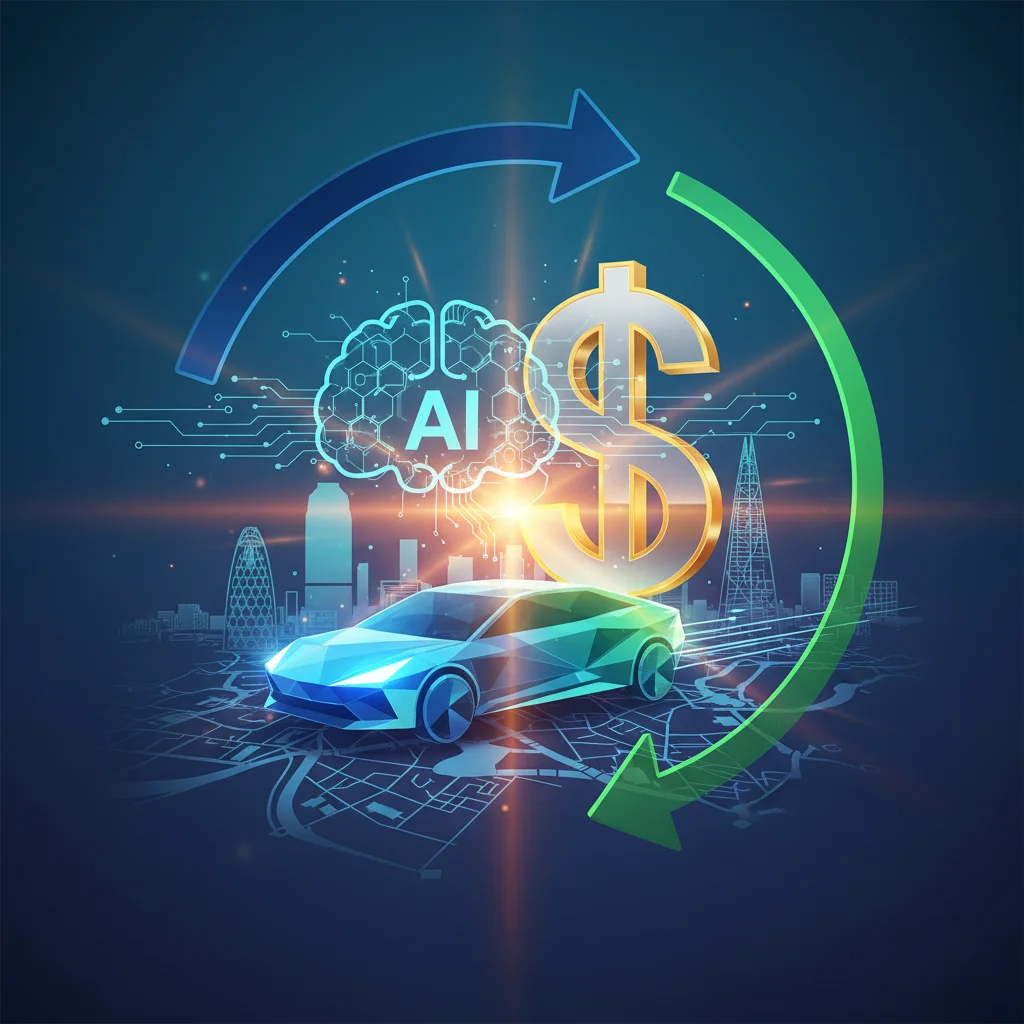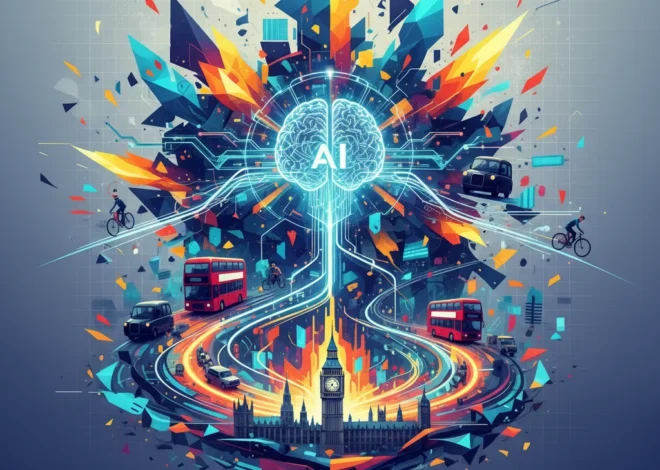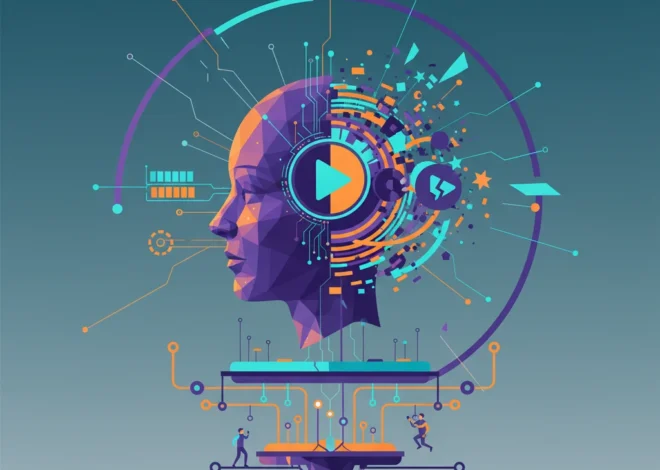
Wayve’s $2 Billion Bet: Is This London Startup About to Redefine Self-Driving Cars with AI?
The world of artificial intelligence is buzzing, and it’s not just about chatbots that can write poetry. A seismic shift is happening in the automotive sector, and London is at its epicenter. Get ready to hear a lot more about Wayve, a UK-based AI startup that’s not just in the fast lane—it’s building a whole new highway. The company is reportedly in talks for a colossal fundraising round that could top $2 billion, with tech giants SoftBank and Microsoft leading the charge. This isn’t just another investment; it’s a massive wager on a revolutionary approach to making cars drive themselves.
If the deal goes through, it would rocket Wayve’s valuation to a staggering $8 billion, making it one of the most valuable AI startups in Europe. But what’s truly fascinating isn’t just the money—it’s the why. In an industry still reeling from the high-profile stumbles of other self-driving ventures, why are some of the world’s biggest investors lining up to pour billions into this London upstart? The answer lies in Wayve’s radical philosophy, which throws out the old rulebook of autonomous driving and embraces a new, more human-like form of artificial intelligence.
The Old Guard vs. The New Wave: A Tale of Two AIs
For years, the race to build a self-driving car has been dominated by a specific methodology. Companies like Waymo and Cruise have invested billions in what can be described as a “rules-based” or “HD mapping” approach. This involves a few key components:
- High-Definition Maps: Meticulously detailed, centimeter-accurate 3D maps of every road, lane marking, traffic light, and stop sign. These cars aren’t seeing the world for the first time; they’re comparing what their sensors see to a pre-loaded digital twin of the environment.
- Complex Sensor Stacks: A heavy reliance on expensive hardware like LiDAR (Light Detection and Ranging), which uses lasers to build a 3D point cloud of the surroundings, alongside cameras and radar.
- Rule-Based Software: An incredibly complex set of hand-coded rules and decision trees. If a car sees a red light, a programmer has written a specific instruction: “stop.” If it detects a pedestrian, another rule is triggered.
This approach is powerful and has achieved impressive results in controlled environments. However, it has a critical weakness: scalability. Mapping the entire world is a monumental task, and the software struggles with “edge cases”—the infinite, unpredictable scenarios that human drivers navigate intuitively every day. What happens when a police officer is manually directing traffic, overriding a green light? What about a construction zone that popped up overnight? The old model can be brittle.
Enter Wayve: Teaching a Car to Drive Like a Human
Wayve is taking a fundamentally different path, one powered by the latest breakthroughs in machine learning and embodied AI. Instead of programming millions of rules, Wayve is focused on teaching its AI to drive by watching and learning from vast amounts of real-world driving data. This is called “end-to-end deep learning.”
Think about how you learned to drive. You didn’t memorize a database of every possible road configuration. You observed, you practiced, and you developed an intuitive understanding of how to react to complex situations. Wayve’s AI does the same. It ingests video data from cameras mounted on vehicles and learns the direct mapping from sensory input (what the car “sees”) to driving output (steering, accelerating, braking). This software-centric model learns the nuances of driving—the subtle cues, the social interactions on the road—without needing an explicit instruction for every single possibility.
To better understand the distinction, let’s compare the two philosophies:
| Feature | Traditional AV Approach (e.g., Waymo, Cruise) | Wayve’s End-to-End AI Approach |
|---|---|---|
| Core Technology | HD Maps, LiDAR, Rule-Based Logic | Deep Learning, Computer Vision, End-to-End AI |
| Primary “Sense” | LiDAR and pre-built maps | Cameras and learned behavior |
| Scalability | Limited by the need to map areas in advance | Potentially global, as it can learn to drive anywhere |
| Handling Novelty | Can struggle with unmapped or unexpected “edge cases” | Designed to generalize and adapt to new situations |
| Development Focus | Hardware (sensors) and meticulous mapping | Software (AI models) and data collection |
This approach promises a more robust and scalable solution. A Wayve-powered car could, in theory, be dropped into a city it has never seen before and navigate effectively because it has learned the fundamental principles of driving, not just the layout of one specific location. This is a game-changer and a key reason why investors are paying close attention.
The Billion-Dollar Players: Why SoftBank and Microsoft Are on Board
A funding round of this magnitude is about more than just a great idea; it’s about the strategic vision of the investors. Both SoftBank and Microsoft bring unique motivations to the table.
SoftBank’s Second Act in Self-Driving
SoftBank’s Vision Fund is famous for its massive, bold bets on disruptive technologies. Its history with the AV sector is complex. The fund was a major backer of GM’s Cruise, which, despite its early promise, has been plagued by accidents, regulatory scrutiny, and a massive recall. According to sources cited by the Financial Times, this history makes SoftBank’s potential investment in Wayve even more significant. It’s a calculated move to back a different horse with a completely different racing style. By investing in Wayve, SoftBank is betting that the end-to-end learning approach can succeed where the HD mapping model has faltered, avoiding the operational and safety pitfalls that have trapped its predecessors.
Microsoft’s AI and Cloud Ecosystem
Microsoft’s interest is a textbook example of smart, synergistic investment. The company is already a partner and investor in Wayve, providing the immense cloud computing infrastructure necessary to train these sophisticated AI models. Training an AI to drive requires processing petabytes of video data, a task perfectly suited for a hyperscale cloud provider like Microsoft Azure. By deepening its investment, Microsoft not only stands to gain from Wayve’s potential financial success but also solidifies Azure as the go-to platform for the next generation of AI-intensive startups. This move echoes its hugely successful partnership with OpenAI, creating a powerful ecosystem where Microsoft provides the computational backbone for the world’s most advanced AI innovation.
What This Means for the Future of AI, Automation, and a Bumper UK Tech Scene
The implications of Wayve’s potential funding extend far beyond the company itself. It’s a bellwether for several key trends in technology and business.
- The Triumph of Embodied AI: For a long time, AI has been seen as a disembodied intelligence living in the cloud (think ChatGPT). Wayve represents the forefront of “embodied AI”—systems that can perceive, reason, and act in the physical world. Success here could accelerate development in robotics, logistics automation, and other areas where AI needs to interact with unpredictable environments.
- A Shot in the Arm for UK Tech: In a global landscape often dominated by Silicon Valley and Chinese tech giants, a deal of this size is a monumental vote of confidence in the UK’s technology sector. It validates the country’s deep talent pool in artificial intelligence and machine learning research and proves that UK-based startups can attract world-leading investment to solve global-scale problems.
- The New Frontier of Cybersecurity: As vehicles become AI-driven software platforms, the importance of cybersecurity skyrockets. An end-to-end learning system presents unique challenges. Protecting the integrity of the training data and securing the AI model itself from adversarial attacks will become a critical field of programming and research, ensuring these intelligent systems can be trusted on public roads.
Wayve has already demonstrated impressive capabilities, with its technology being tested on the complex streets of London. The company has existing partnerships with UK grocery delivery giant Ocado and logistics company DPD, showcasing the commercial potential of its SaaS (Software as a Service) or “Intelligence as a Service” model for fleet automation. This funding, as mentioned by sources close to the deal (source), would provide the capital to scale these trials, expand its data-gathering operations, and refine its AI models at an unprecedented rate.
The Road Ahead: A Long Journey, But the Destination is in Sight
Let’s be clear: solving autonomous driving is one of the hardest engineering challenges of our generation. Wayve’s journey is far from over. The company will face immense technical hurdles, regulatory approvals, and the challenge of earning public trust. However, this potential $2 billion war chest, backed by the strategic power of SoftBank and Microsoft, gives it the fuel it needs to tackle that journey head-on.
The story of Wayve is more than just another tech funding announcement. It’s a story about a paradigm shift in our approach to building intelligent machines. It’s a bet that the future of automation lies not in rigid instructions, but in adaptive learning. If Wayve succeeds, it won’t just change how we get from point A to point B; it will fundamentally alter our relationship with artificial intelligence itself, proving that the most powerful way to build the future is to teach it, not just to code it.


